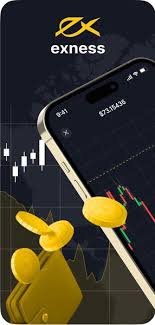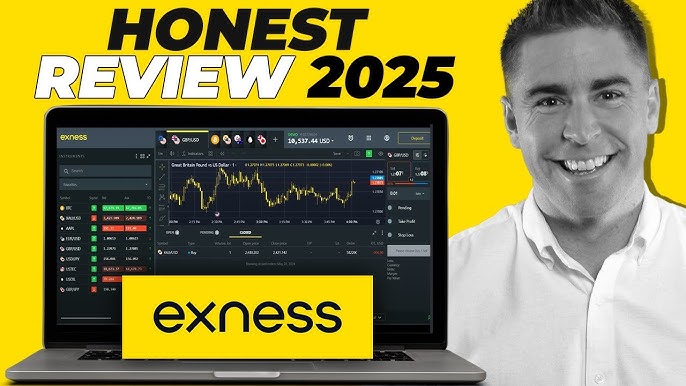Comprehensive Guide to Manage Trades In Exness Personal
C o m p r e h e n s i v e G u i d e t o M a n a g e T r a d e s I n E x n e s s P e r s o n a l

Managing Your Trades in Exness Personal: A Comprehensive Guide
Managing trades in the Exness Personal account is a vital skill for anyone serious about trading in the financial markets. Whether you are a beginner or an experienced trader, mastering the management of your trades can significantly boost your trading success. In this guide, we will cover everything from setting up your Exness account to advanced trading strategies that can help you make informed decisions. For more detailed information about accessing your Exness account, visit Manage Trades In Exness Personal Area https://trading-ph.com/login-exness/ and login to your personal trading dashboard.
1. Understanding Exness Personal Account
Exness is a well-known online trading platform that provides users with a variety of financial instruments to trade, including forex, commodities, and cryptocurrencies. The Exness Personal account is designed to cater to both casual and professional traders, offering a user-friendly interface and a range of tools to help manage trades effectively.
2. Setting Up Your Exness Personal Account
Getting started with Exness requires a straightforward registration process. Here’s a step-by-step guide:
- Registering: Visit the Exness website and click on the ‘Register’ button. Fill in your details, including your name, email address, and phone number.
- Verification: After registration, verify your identity as per Exness’s requirements. This usually involves providing identification documents.
- Funding Your Account: Choose a suitable deposit method and fund your account. Exness supports various deposit options, including bank transfers and electronic wallets.
3. Navigating the Trading Dashboard
Once you are logged into your Exness Personal account, familiarize yourself with the trading dashboard. The main components include:
- Trading Instruments: Access various assets and explore their market conditions.
- Charts and Analysis Tools: Utilize real-time charts and analytical tools for informed trading.
- Trade History: Keep track of your past trades and analyze performance.
4. Placing Your First Trade
Placing a trade in Exness is simple. Follow these steps:
- Choose your preferred financial instrument.
- Analyze market conditions and determine your entry and exit points.
- Decide on the trade size and whether to set stop-loss and take-profit orders.
- Click the ‘Buy’ or ‘Sell’ button to execute your trade. Your trade will show up in the trade history as soon as it’s executed.

5. Managing Active Trades
Effective trade management is crucial to minimize losses and maximize profits:
- Stop-Loss Orders: Always set a stop-loss order to limit potential losses. This is a predetermined price level at which you will exit a trade.
- Take-Profit Orders: Similarly, set a take-profit order to lock in profits when your trade reaches a desired level.
- Monitoring the Market: Keep an eye on market trends and news that may affect your open positions.
6. Analyzing Your Trades
Post-trade analysis is key to improving your trading strategy:
- Reviewing Your Performance: Regularly assess the success and failure of your trades. What strategies worked? What didn’t?
- Adjusting Your Strategy: Based on your analysis, tweak your trading strategies accordingly. This may involve changing your risk management approach or exploring new assets.
7. Advanced Trading Strategies
Once you are comfortable with basic trading techniques, consider exploring advanced strategies:
- Scalping: Involves making multiple trades throughout the day to exploit small price movements.
- Day Trading: A strategy where trades are opened and closed within the same day, taking advantage of volatility.
- Position Trading: A longer-term trading strategy based on fundamental analysis, where trades can be held for weeks or months.
8. Risk Management Techniques
Risk management is a critical aspect of trading that can greatly influence your profitability:
- Diversification: Don’t put all your capital into a single trade. Spread your risk across various assets.
- Position Sizing: Determine how much of your capital you are willing to risk on each trade.
- Emotional Control: Stay disciplined and avoid making impulsive decisions based on fear or greed.
9. Continuous Education and Improvement
The financial markets are constantly evolving, and staying informed is key to ongoing success:
- Webinars and Tutorials: Take advantage of educational resources provided by Exness and other platforms to enhance your skills.
- Market Analysis: Regularly read market studies to understand trends better and predict future movements.
- Feedback and Mentorship: Seek feedback from experienced traders or consider mentorship programs to gain insights.
Conclusion
Managing trades in your Exness Personal account effectively can make a significant difference in your trading outcomes. By understanding the platform, utilizing strategic approaches, and committing to continuous education, you can put yourself in a great position to succeed as a trader. Start your journey today with confidence and take control of your financial future!

Katerina Monroe
@katerinam • More Posts by Katerina
Congratulations on the award, it's well deserved! You guys definitely know what you're doing. Looking forward to my next visit to the winery!
